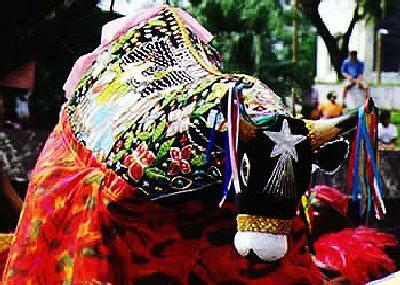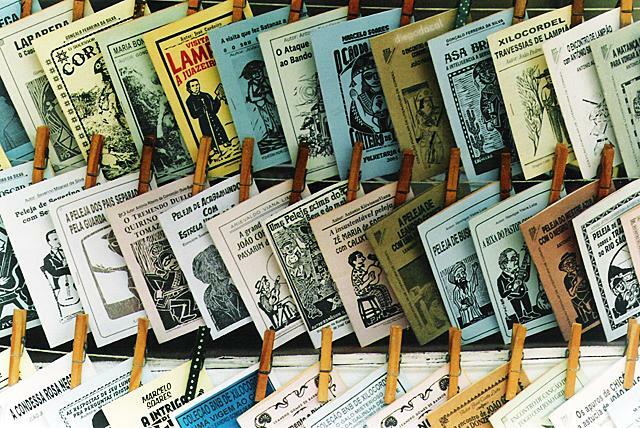
The culture of a region is symbolized by the various manifestations of traditions and customs that give rise to the construction of the cultural identity of that people. These elements remain in history through their transmission from one generation to the next, the dance, cuisine, music, rhythms, vocabulary, art, religion are some of the factors that make up the construction of a culture.
The process of globalization has been interfering with the permanence of cultural manifestations, the ease with which people move and communicate ends up modifying or adding new values to this identity or even trying to standardize it in the context of a capitalist world that prioritizes more what comes from out of what is produced in your country, in order not to run the risk of seeing our culture mischaracterized or simply abandoned, we must seek means of passing on these traditions to the next generations, encouraging them about the importance of maintaining popular culture for the permanence of our own identity.
see more
Scientists use technology to unlock secrets in ancient Egyptian art…
Archaeologists discover stunning Bronze Age tombs in…
The Northeast region is made up of nine states: Alagoas, Bahia, Ceará, Maranhão, Paraíba, Pernambuco, Piauí, Rio Grande do Norte and Sergipe, the privileged nature and beauty of the many beaches attract thousands of tourists every years. But in addition to these attractions, the region also has several social problems, many of them reflections of the low rainfall, which hinders the development of the agriculture, livestock and causes a rural exodus in search of better living conditions in urban centers, which ends up increasing the number of unemployed people in cities.
However, contrary to what many people believe, the drought in the Northeast is more intense in the region known as the Polígono das Secas, which covers eight northeastern states: Alagoas, Bahia, Ceará, Paraíba, Pernambuco, Piauí, Rio Grande do Norte and Sergipe, in these places the temperature The high temperature combined with the low rainfall index (low amount of rain) contributes to the semi-arid climate and the intensification of the problems social.
The government has been creating some measures to try to reduce the impact of the drought on social development, the transposition of the São Francisco River is one of the projects that seeks to bring irrigation to the most arid regions and benefit the agriculture. Despite all the problems, the northeastern people are also known for their pride in preserving their traditions and customs, they know that by keeping popular culture alive they will be contributing to the preservation of the history and identity of their region. Read below some of the cultural manifestations of the Northeast:

The bumba-meu-boi is one of the typical folk manifestations of the State of Maranhão. The tradition has been repeated since the 19th century, and revolves around a character dressed as an ox who performs various choreographies to the sound of music. different regional characters, by his side several characters from colonial Brazil participate: the slave, the plantation owner, captain of the bush, vicar, tax collector taxes. According to legend, a farmer in the region found his favorite ox dead and turned to the shaman to resuscitate it, after performing some indigenous rituals the animal revived and left dancing happily beside the owner.

Afro-indigenous dance brought by Africans to Brazil, upon arriving in the country it incorporated some rituals of indigenous peoples. It consists of a dance performed by men carrying sticks that, when hitting them at the end of a song, produce a sound close to the rhythm they sing. The dance was performed in the cane fields of the sugar mill owners and was a way for blacks to vent their anger. Currently maculelê is inserted in presentations of capoeira.

Popular poems printed on colored paper using the woodcut technique received this name, as in Portugal it was displayed tied to strings in streets close to popular markets. It was introduced in Brazil by the Portuguese in the 18th century, the booklets are sold by the authors themselves at a very low cost. Cordel became known for disclosing socio-political issues using a more comical language and close to the simple language of the residents. Among the main representatives of the genre we can highlight: Leandro Gomes de Barros (1865-1918), Patativa do Assaré, Chico Traíra and José Pacheco da Rosa. Below follows an excerpt from the poetry of Patativa do Assaré.
Retirement of Mané do Riachão
Your boy be aware
From everything I'm going to tell you,
I'm a poor penitent
I was born on the day of aza,
On a whim I came into the world
Near a deep creek
In the ugliest cave
And since I was born there,
I became known
By Mané do Riachão.

The June festivities are part of the festive calendar of the Northeast region as a tribute to three saints of the Catholic Church: Santo Antônio, São Pedro and São João. However, the origin of these dances predates the Christian era. Several peoples of antiquity held pagan festivals to celebrate harvests and thank the gods. Today Caruaru (PE) and Campina Grande (PB) stand out in the June festivities.

A popular festival that combines music, dance and poetry, it was introduced in the Recôncavo region of Bahia in the State of Bahia during the 17th century. Samba de roda is a mixture of African slave traditions with elements of Portuguese culture. The choreography consists of placing the participants in a circle in which the women, one at a time, go to the center to perform a dance based on the movements of the hands, feet and hips.

One of the great attractions of the northeast region is the diverse cuisine. The region's typical dishes add influences from indigenous, African and Portuguese cultures. Delicacies prepared using seafood, corn, dried meat, cassava and coconut make northeastern cuisine one of the most appreciated in Brazil.
Acarajé, dumpling made from black-eyed peas and fried in palm oil. The profession of the baianas do acarajé was declared historical heritage of Brazil in 2012.
Lorena Castro Alves
Graduated in History and Pedagogy


